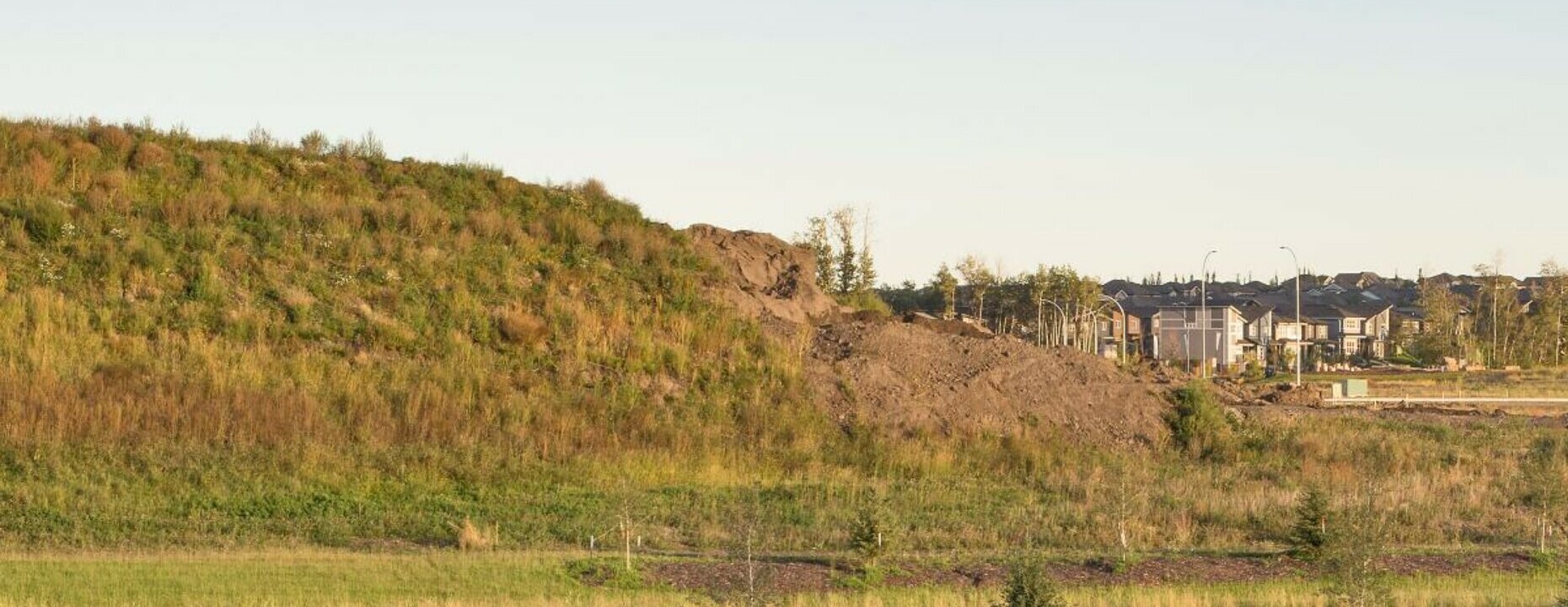Blaine Campbell’s large-format photograph Cyclorama is an immersive look at the panoramic transformation of landscape during suburban development. The image documents the process of land modification as a study of both the displaced soil created as new communities are structured in the prairie landscape, but also how the scale of these temporal mounds alter the sight lines of the horizon.
Curator’s statement
Blaine Campbell’s large-format photograph Cyclorama is an immersive look at the panoramic transformation of landscape during suburban development. The image documents the process of land modification as a study of both the displaced soil created as new communities are structured in the prairie landscape, but also how the scale of these temporal mounds alter the sight lines of the horizon. Staged as a diptych, the free-standing mode of presentation hints at the utilitarian archetypes found near large-scale construction sites.
Campbell frequented a site of a developing subdivision north of his community of Spruce Grove, Alberta. The site’s large hill of topsoil situated adjacent to the new tract housing subdivisions is typical during the continuous cycle of land annexation and development located near all four quadrants of the city of Edmonton. As part of a managed landscape, these hills temporarily interrupt our idealization of the Canadian landscape as a largely untouched ‘raw’ environment. As an extension of the artist’s series Transient Architectures for New Tomorrows, Cyclorama is indicative of Campbell’s technical photographic process and also points to the complex and monumental constructs at play in the repurposing of farmland into a new community: stripping away the stratigraphic fertile spoil to make way for new redevelopment.

